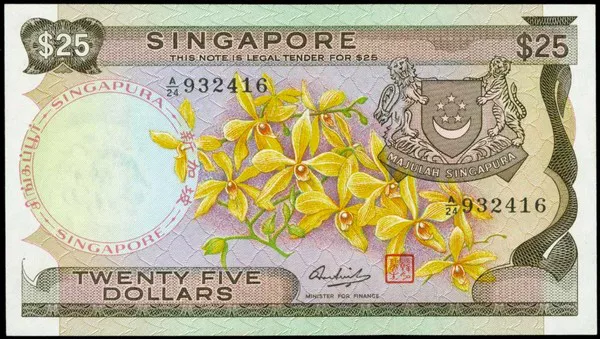The Singapore dollar (SGD) has experienced a notable depreciation in recent times, which has raised concerns among investors and individuals alike. As an important global financial hub, understanding the reasons behind this currency movement is crucial to grasp the implications for various sectors of the Singaporean economy. This article aims to delve into the factors that have contributed to the falling value of the Singapore dollar, analyzing both domestic and global influences. By examining elements such as monetary policy, economic indicators, external trade dynamics, and market sentiment, readers will gain insights into the drivers shaping the SGD’s depreciation.
1. Global Economic Factors:
The global economic landscape plays a significant role in influencing the performance of currencies, including the Singapore dollar. Several key factors have affected the SGD’s depreciation:
US Dollar Strength: The strength of the US dollar has put downward pressure on many currencies worldwide, including the SGD. As the US Federal Reserve hikes interest rates and tightens monetary policy, capital outflows from emerging markets occur, leading to a decline in demand for the Singapore dollar.
Trade Tensions: Escalating trade tensions between major economies, particularly the United States and China, have had ripple effects on global trade and investment flows. Singapore, being a highly trade-dependent nation, has been impacted by reduced export demand and weaker investor sentiment, contributing to the depreciation of the SGD.
2. Monetary Policy Factors:
Monetary policy decisions made by the Monetary Authority of Singapore (MAS) significantly influence the value of the Singapore dollar. Key aspects affecting the SGD’s depreciation include:
Divergent Monetary Policies: Central banks around the world have pursued divergent monetary policies, with some tightening and others adopting accommodative measures. The MAS, due to its exchange rate-based monetary policy framework, adjusts its policy to ensure price stability and economic growth. If other central banks raise interest rates while the MAS maintains a relatively accommodative stance, it can lead to capital outflows and weaken the SGD.
Inflation Differentials: Disparities in inflation rates between Singapore and major trading partners impact the relative value of the Singapore dollar. If inflation rises more rapidly in Singapore compared to its trading partners, it erodes the competitiveness of Singaporean exports, reducing foreign demand for the SGD and contributing to its depreciation.
3. Economic Indicators:
The performance of key economic indicators provides insights into the underlying factors affecting the Singapore dollar’s depreciation:
GDP Growth: Singapore’s economic growth has experienced fluctuations in recent years. Slower-than-expected GDP growth can dampen investor sentiment and reduce foreign investment inflows, putting downward pressure on the SGD.
Current Account Balance: The current account balance, representing the net trade surplus or deficit, is an essential indicator of a country’s external sector. A persistent current account deficit can weaken a currency as it indicates higher import demand, leading to increased demand for foreign currencies and depreciation of the domestic currency.
4. External Trade Dynamics:
Singapore’s open economy heavily relies on international trade, making external trade dynamics pivotal in understanding the SGD’s depreciation:
Reduced Export Demand: Weak global demand for Singaporean exports due to global economic slowdowns and trade tensions can weigh on the SGD’s value. Lower export earnings diminish foreign currency inflows, reducing demand for SGD and contributing to its depreciation.
Exchange Rate Dynamics: The relative strength and performance of other major currencies against the Singapore dollar directly affect its value. Currencies such as the US dollar, euro, and Chinese yuan have a significant impact on the SGD’s exchange rate, and changes in these currencies can influence the SGD’s performance.
5. Investor Sentiment and Market Factors:
Market sentiment and investor behavior also play a crucial role in currency movements, impacting the value of the Singapore dollar:
Risk Aversion: During periods of heightened global uncertainty and risk aversion, investors tend to shift funds from riskier assets to safe-haven currencies such as the US dollar. This flight to safety can lead to a depreciation of emerging market currencies, including the SGD.
Speculative Activity: Speculative trading in the foreign exchange market can amplify currency movements. Excessive speculation or unwinding of speculative positions can result in sharp movements in the SGD’s value.
Conclusion:
The depreciation of the Singapore dollar is influenced by a complex interplay of domestic and global factors. The strength of the US dollar, trade tensions, monetary policy divergences, economic indicators, external trade dynamics, investor sentiment, and market factors collectively contribute to the SGD’s recent weakening. Understanding these factors enables policymakers, businesses, and individuals to anticipate and mitigate the potential impacts of currency fluctuations on various sectors of the Singaporean economy. Monitoring global economic developments, central bank policies, and emerging market trends will be crucial for assessing the future trajectory of the Singapore dollar and devising appropriate strategies to manage its effects.


